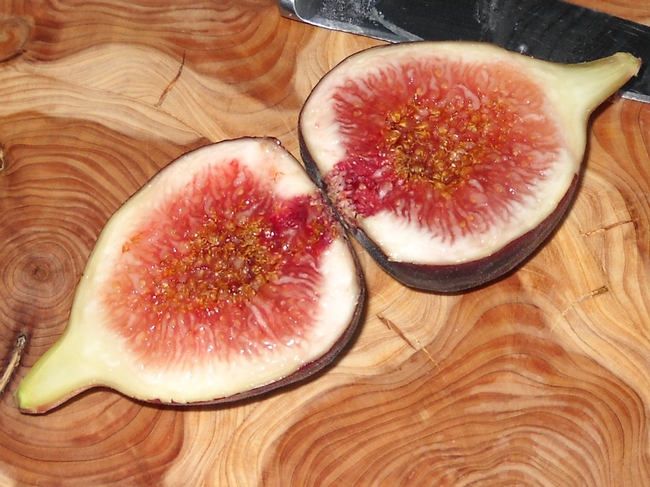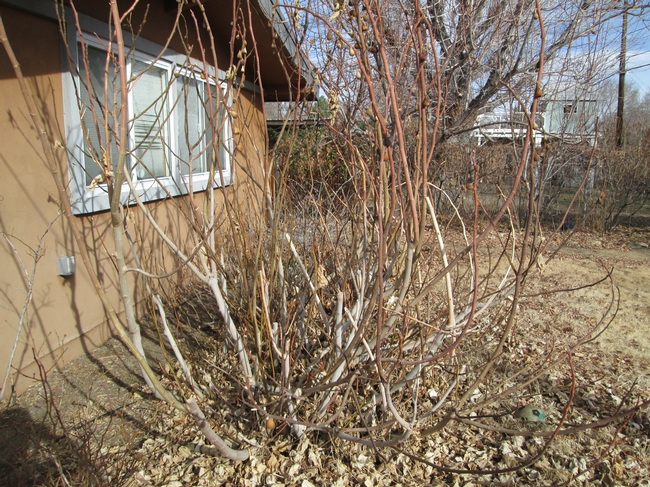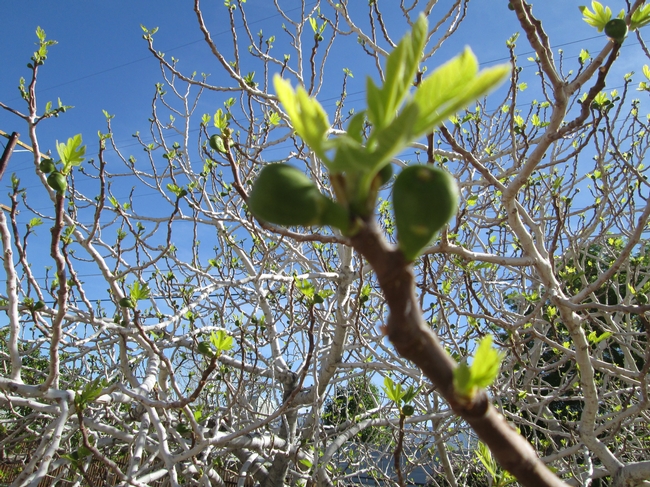- Author: Alison Collin
When we relocated from Silicon Valley to the Owens valley the very last thing to be thrown into the moving van was a rooted piece of a Brown Turkey fig. We had enjoyed wonderful, large, lush figs from the parent tree for years, and knowing that figs grow in Bishop I dreamed of the tradition continuing. I should have known better since my daughter in West Bishop already had a start of this fig and it had died almost to ground level every winter. I thought that I could do better!
Soon the cutting was installed in a prime spot on the south facing wall of our house. It rapidly became established and grew very well in its first year, but being rather naïve about high desert winters I did not give it enough winter protection and it died down to the ground.
In spring several nodes produced shoots from the base of the original stem, grew well, and having learned my lesson I mulched thickly with straw in the fall. Although this protected the base of the plant, once again all the exposed shoots died back to where it had been protected, and the next growing season my garden was infested with earwigs that had enjoyed the winter protection of the straw. A local grower told me that once the main stem got to a 2” diameter it would do better.

In desperation I bought a Hardy Chicago fig, which certainly lives up to its name, and produces a prolific crop of rather small and not very flavorful figs.
In 2017 I wrapped all the main branches of the Brown Turkey with strips of quilting fleece, put frost cloth around the outside of the cage as before and draped a quilted mattress cover over the whole thing. It looked awful, but he plant came through a fairly mild winter unscathed, it grew vigorously, and I picked my first fig in the middle of August, and from that point on I could harvest a couple most days, but in spite of the tree now being 8 feet high, I never got to the point when I could pick a basketful and once again the stems were clothed in immature figs at the end of the season. Being an optimistic gardener I will undoubtedly try it “for one more year”. Meanwhile I have visited gardens in Wilkerson that have very large and productive fig trees.
So what do figs need? Figs originated in Western Asia and the eastern Mediterranean areas, and in general require prolonged high summer heat and regular water to bear good fruit. There are many hundreds of varieties each of which may be known by several different names! Hardiness varies, but most will suffer twig damage below 12°F resulting in them becoming more shrub-like. Many are capable of producing an early crop on older growth (if it survives)- known as the breba crop - and then a later crop on current season's growth. It may be prudent to avoid late cropping figs which may not mature before the first frost which can be very early here.


The fig which seems to do best around Bishop is a green one, Kadota, which grows in numerous local gardens and produces crops twice a year under favorable conditions. It has a fairly thick skin, and mediocre fig flavor.
The following varieties have been grown in areas with a climate similar to that which we experience, and most of these should do well in the milder, more southerly areas, so when choosing remember to take our various microclimates into consideration.
• Brown Turkey
• Celeste is hardy here but main crop is late some years. Excellent flavor.
• Hardy Chicago is also hardy in Bishop.
• Violet de Bordeaux is marginally hardy, but delicious.
• Marseilles (Lemon) and Italian Honey (Lattarula) should both survive in town. They are fine in Wilkerson.
• Kadota should do fine. Often has successful breba crop. It is good for jam and spreads.
New Mexico State University recommends Celeste, Brown Turkey, Hardy Chicago, Desert King, Kadota, and Violette de Bordeaux.
Colorado Master Gardeners suggested Brown Turkey, Brunswick, Danny's Delite,and Blue Celeste.
The following is a l database of hundreds of fig varieties with photos and cultural requirements of each: http://figs4fun.com/Varieties.html
General information on requirements of figs, although not specific to the Owens Valley: http://homeorchard.ucanr.edu/Fruits_&_Nuts/Fig/




